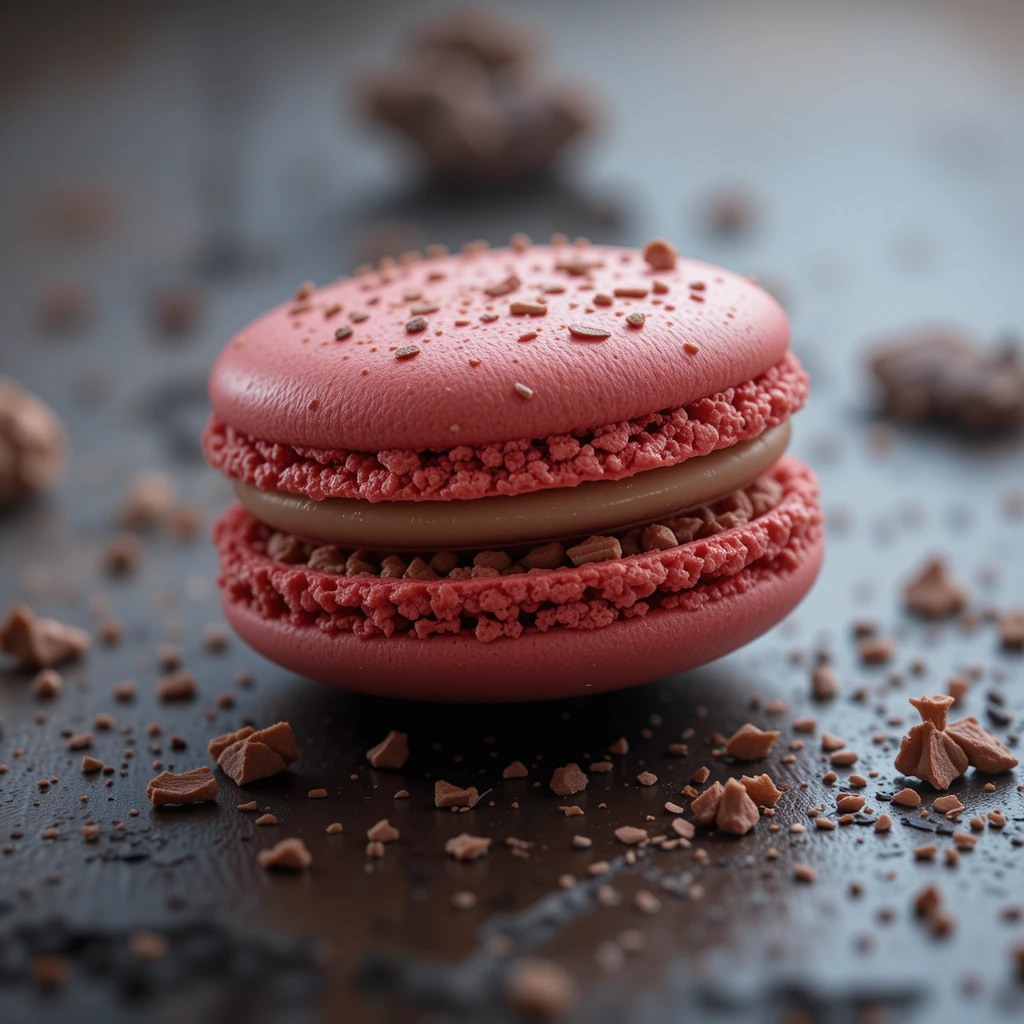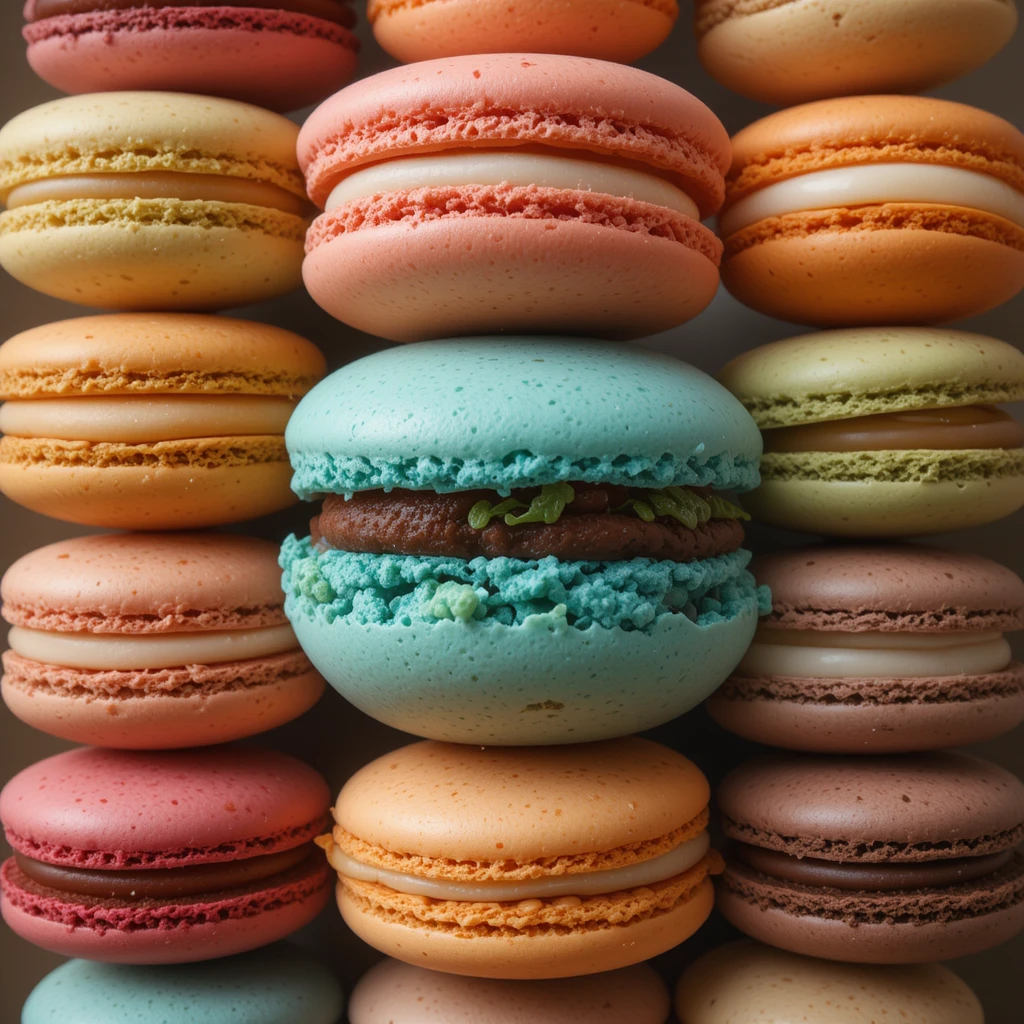The Intricacies of Baking: Unveiling the Hardest Cookie to Master
In the vast and varied world of baking, few challenges are as daunting and rewarding as crafting the perfect macaron. This delicate French confection, renowned for its vibrant colors and exquisite flavors, is often hailed as the hardest cookie to make. Its reputation is well-deserved, demanding an unwavering commitment to technique and an eye for detail. For those who dare to embark on this culinary journey, the macaron offers not only a test of skill but also an opportunity to create a masterpiece that delights both the eyes and the palate.
The Macaron: A Culinary Masterpiece
Macarons are more than just cookies; they are a symbol of elegance and sophistication. Their allure lies in their perfect balance of textures—a crisp outer shell encasing a soft, chewy interior, often complemented by a rich, flavorful filling. Achieving this harmony is no small feat, requiring a meticulous approach and a deep understanding of the baking process. The macaron’s delicate nature and complex preparation process make it a true testament to a baker’s skill and precision.
The History and Evolution of the Macaron
The macaron’s journey from humble beginnings to a global sensation is as fascinating as the cookie itself. Originating in Italy, the macaron was brought to France by Catherine de’ Medici in the 16th century. Initially, it was a simple almond meringue cookie, but over time, it evolved into the sophisticated treat we know today. The modern macaron, characterized by its two almond meringue shells and a creamy filling, was popularized in the early 20th century by the French patisserie Ladurée. This evolution reflects the macaron’s adaptability and enduring appeal, as it continues to captivate bakers and consumers alike.

The Challenges of Crafting the Perfect Macaron
1. Precision in Ingredients and Measurements
The journey to a flawless macaron begins with precision. Unlike other cookies, where minor deviations might go unnoticed, macarons demand exactness. The ratio of almond flour to powdered sugar, the consistency of the meringue, and the precise amount of food coloring all play crucial roles in the final product. A slight imbalance can lead to disastrous results, such as cracked shells or uneven textures. This precision extends to the quality of the ingredients as well. High-quality almond flour, free from any impurities, is essential for achieving the smooth texture and rich flavor that define a perfect macaron.
2. Mastering the Meringue
At the heart of every macaron is a perfectly whipped meringue. Achieving the right consistency—stiff yet glossy—is essential. Over-whipping or under-whipping can lead to flat or hollow shells, while the presence of any fat or moisture can deflate the meringue entirely. This step requires both skill and intuition, as even the humidity of the kitchen can affect the outcome. There are three main types of meringue used in macaron making: French, Italian, and Swiss. Each has its own set of challenges and benefits. The French meringue is the simplest, made by whipping egg whites and gradually adding sugar. The Italian meringue involves boiling sugar syrup and adding it to whipped egg whites, resulting in a more stable meringue. The Swiss meringue is made by heating egg whites and sugar over a double boiler before whipping.
3. The Art of Macaronage
Macaronage, the process of folding the dry ingredients into the meringue, is where many bakers falter. The batter must be mixed to the perfect consistency, flowing like lava but not too runny. This step requires a keen eye and a practiced hand to ensure the batter is neither over-mixed nor under-mixed, as both can compromise the structure of the macaron. Over-mixing results in a batter that is too runny, leading to flat and misshapen shells, while under-mixing can cause the batter to be too thick, resulting in uneven surfaces and poor rise. Mastering macaronage is a delicate balance that often requires practice and patience.
4. Piping and Resting
Piping the batter onto the baking sheet demands uniformity and precision. Each shell must be identical in size to ensure even baking. After piping, the shells must rest to form a skin, a step that is crucial for developing the characteristic macaron “feet.” This resting period requires patience and discipline, as rushing can lead to unsatisfactory results. The resting time can vary depending on the humidity and temperature of the environment, but it typically ranges from 20 to 60 minutes. During this time, the surface of the macarons should become dry to the touch, which helps prevent cracking during baking.
5. Baking to Perfection
The final hurdle is the baking process itself. Oven temperature and timing are critical; too hot, and the shells will crack, too cool, and they will not rise properly. Even the slightest variation can mean the difference between success and failure. Bakers must be vigilant, adjusting their techniques to accommodate the quirks of their ovens. Some bakers prefer to use a convection oven for more even heat distribution, while others find success with a conventional oven. It’s important to monitor the macarons closely during baking, as they can quickly go from perfectly baked to overdone. The ideal baking time is usually between 12 to 15 minutes, but this can vary depending on the size of the macarons and the specific oven used.
The Reward of Perseverance
Despite the challenges, the reward of crafting the perfect macaron is well worth the effort. Each successful batch is a testament to the baker’s dedication and skill, a celebration of precision and artistry. The satisfaction of biting into a macaron with a perfectly crisp shell and a luscious filling is unparalleled, offering a sensory experience that delights both the palate and the soul. The vibrant colors and intricate designs of macarons also make them a feast for the eyes, adding an element of visual artistry to their appeal.
The Creative Potential of Macarons
Once the basic technique is mastered, macarons offer endless possibilities for creativity and experimentation. Bakers can explore a wide range of flavors, from classic combinations like raspberry and chocolate to more adventurous pairings such as matcha and yuzu. The fillings can also vary, with options including buttercream, ganache, fruit preserves, and even savory ingredients like cheese or herbs. The versatility of macarons allows bakers to express their creativity and push the boundaries of traditional flavors, making each batch a unique and personal creation.
Tips for Aspiring Macaron Makers
- Invest in Quality Ingredients: Use high-quality almond flour and fresh eggs for the best results. The quality of the ingredients directly impacts the texture and flavor of the macarons.
- Practice Patience: Allow time for resting and cooling; rushing the process can lead to disappointment. Patience is key to achieving the perfect texture and appearance.
- Embrace Failure as a Learning Tool: Each attempt, successful or not, provides valuable insights and experience. Learning from mistakes is an essential part of mastering the art of macaron making.
- Experiment with Flavors and Colors: Once you’ve mastered the basics, let your creativity shine with unique combinations. Don’t be afraid to try new ingredients and techniques to create your signature macarons.
- Maintain a Consistent Environment: Temperature and humidity can greatly affect the outcome of macarons. Try to maintain a consistent environment in your kitchen to ensure reliable results.
- Keep a Baking Journal: Document your process, including ingredient measurements, oven settings, and any adjustments made. This can help you identify patterns and make improvements in future batches.
- Seek Feedback: Share your creations with friends and family and ask for their honest feedback. Constructive criticism can provide valuable insights and help you refine your technique.

Frequently Asked Questions (FAQ)
What is the difference between a macaron and a macaroon?
A macaron is a delicate French pastry made with almond flour, egg whites, and sugar, characterized by its smooth, crisp shell and chewy interior. A macaroon, on the other hand, is a denser, chewy cookie made primarily with shredded coconut. The two are often confused due to their similar names, but they are distinct in both ingredients and texture.
Why do my macarons have cracked shells?
Cracked shells can result from several factors, including over-mixing the batter, insufficient resting time, or baking at too high a temperature. Ensuring that the shells have formed a proper skin before baking and maintaining a consistent oven temperature can help prevent cracking.
How do I achieve the perfect macaron “feet”?
The “feet” are the ruffled edges at the base of a macaron shell, and they are a sign of a well-made macaron. To achieve them, ensure that the batter is mixed to the correct consistency, allow the shells to rest and form a skin before baking, and bake at the right temperature. Consistency in these steps is key to developing the desired feet.
Can I make macarons without almond flour?
While almond flour is traditional, some bakers experiment with alternatives like hazelnut or pistachio flour for different flavors. However, these substitutions can affect the texture and require adjustments to the recipe. It’s important to note that nut-free versions, using ingredients like sunflower seed flour, may also be possible, but they require careful experimentation to achieve the right consistency.
How should I store macarons?
Macarons are best stored in an airtight container in the refrigerator. They should be allowed to mature for at least 24 hours before serving, as this enhances their flavor and texture. When ready to serve, allow them to come to room temperature for the best taste experience.
Can I freeze macarons?
Yes, macarons can be frozen. Place them in an airtight container, separating layers with parchment paper, and freeze for up to a month. Thaw them in the refrigerator before bringing them to room temperature for serving.
Why are my macarons hollow?
Hollow macarons can result from over-whipping the meringue, under-mixing the batter, or baking at an incorrect temperature. Ensuring the meringue is whipped to the right consistency and carefully monitoring the baking process can help prevent hollowness.
Conclusion
While macarons may be the hardest cookie to make, they are also the most rewarding. With determination and practice, you can transform this challenging endeavor into a delightful and delicious triumph. So, roll up your sleeves, embrace the challenge, and embark on your journey to macaron mastery. The world of exquisite flavors and textures awaits, offering endless opportunities for creativity and self-expression. Whether you’re a seasoned baker or a passionate novice, the art of macaron making promises a fulfilling and inspiring adventure.

